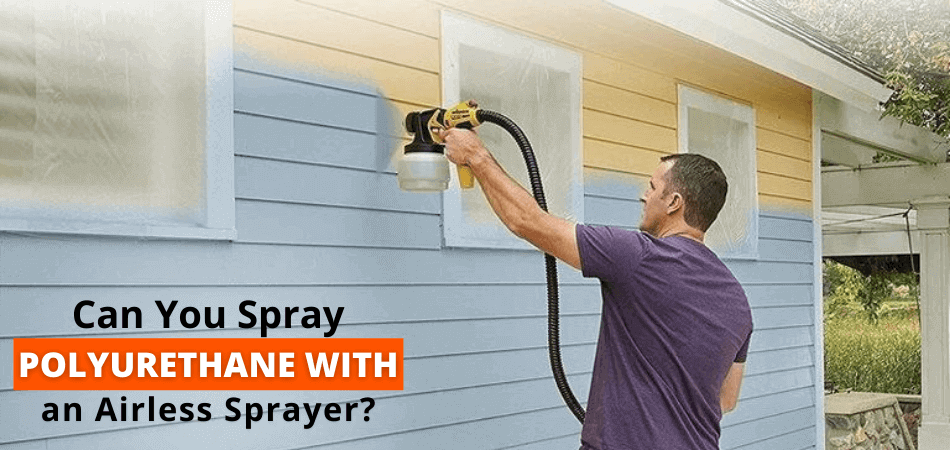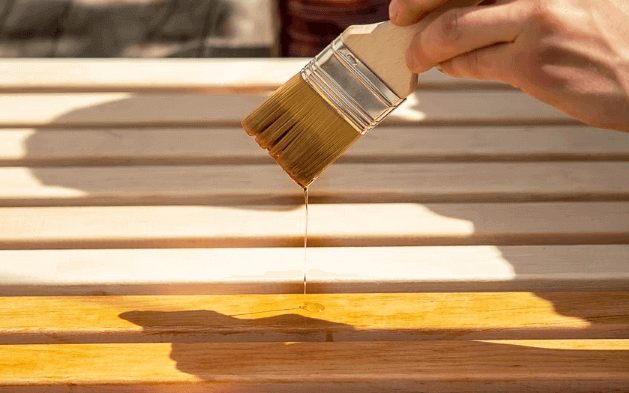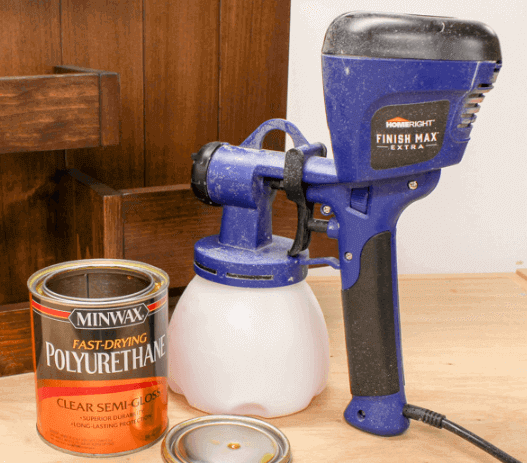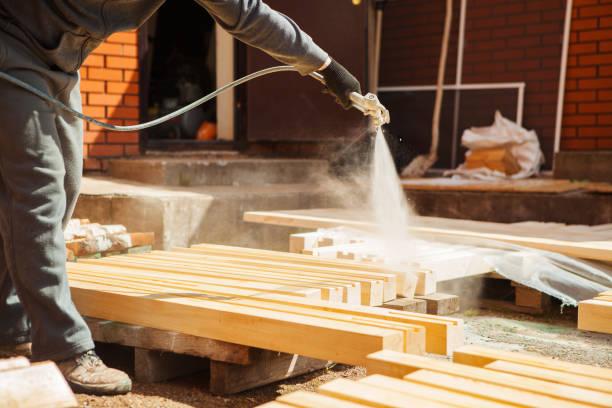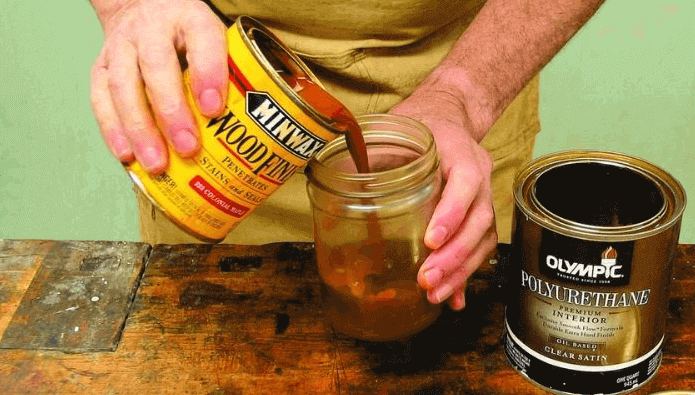Being a professional painter, James never limits himself to his job only. He wants to utilize his decade of painting experience by helping people who...Read more
Applying polyurethane can be a no-brainer for experienced painters. However, you don’t want to waste your precious polyurethane on some DIY project – it’s a highly meticulous task. You may be confused about the best application technique for your project – whether to use a brush or a spray gun.
It’s a bit more puzzling where it narrows down to what kind of sprayer to use when you only have an airless sprayer available. This leads to asking the wisest question– “how do you spray polyurethane with an airless sprayer?” Well, this article has the requirements to guide you with that. Keep reading to learn more.
Contents
Can You Spray Polyurethane with an Airless Sprayer?
You can use almost any kind of sprayer to spray polyurethane. This means that airless sprayers will also help you get the job done. However, note that different kinds of paints require specific types of sprayers to have the job done at its best.
The best type of sprayer suitable for use with polyurethane is the HVLP (High Volume Low Pressure) sprayer. This is because of the gun’s effectiveness in minimizing over-spraying and giving a flawless finish to the surface.
Notwithstanding, you can still apply your polyurethane using an airless sprayer. Airless sprayers pump out paint at pretty high pressure (about 3000 psi) and are suitable for spraying polyurethane on very large surfaces at high speed.
It allows you to get the job done at a very high speed but with lower efficiency when compared to an HVLP sprayer. Moreover, you’ll get plenty of overspray and some messy areas on the work. However, you can reduce such results by doing the job with a high level of caution.
About Polyurethane
Polyurethane is a substance that is usually used by painters to coat or shield painted surfaces. It’s a highly recommended finish for your wooden project. Also, polyurethane can be sprayed over the floor due to its high durability and tough gloss.
Since there are different formulations of polyurethane, the applicability and mode of application differ. Also, some other factors that can affect the mode of application include the size and nature of the surface to be sprayed.
There are two major types of polyurethane – water-based and oil-based. The main difference between these two types is in their appearance. Water-based polyurethanes are typically clear, while oil-based polyurethanes have a warm amber appearance. Moreover, oil-based polyurethane takes longer to dry than water-based polyurethanes.
About Sprayers
Sprayers are used to apply a more even and a finer layer of paint and surfaces than rollers or paintbrushes. Also, it does this more efficiently and quicker than brushes or rollers. There are three main types of sprayers, they are compressed air, airless, and HVLP (High Volume Low Pressure) sprayers.
Among the three types of sprayers mentioned above, the most reliable sprayer for polyurethane is the HVLP sprayer. This is because of its ability to minimize the chances of overspray. In addition, this sprayer increases the possibility of you completing an error-free finishing on surfaces. But you can still use the airless sprayer to get the job done.
How Do You Spray Polyurethane With An Airless Sprayer?
To get your polyurethane over any surface, there are several possible methods of doing this. But, don’t think of using a paintbrush to do this job – you’ll end up with messy brush stains. Sprayers are the best way to get any finishing job done on surfaces.
As we said earlier, HVLP sprayers are the most reliable paint sprayer for polyurethane. To do the job with an airless sprayer, follow the step-by-step guide provided below.
Step 1: Mix the polyurethane – Thoroughly
This tip may sound like a no-brainer since all painting substances require to be mixed before use. The catch is on “thoroughly”. So, make sure you get it done the right way; we’ll tell you why. Polyurethane comes in cans of different sizes. Moreover, these cans contain polyurethane alongside a flattening agent.
The flattening agent helps you to transform your surface sheen from gloss to matte. Moreover, the flattening agent settles to the bottom of the can. Thoroughly stirring polyurethane helps to properly mix the two components, thus, giving the best result.
An improperly mixed polyurethane will result in an irregular sheen on the sprayed surface. You don’t want those foggy patches, so make sure you’re mixing polyurethane thoroughly.
Step 2: Add Some of The Paint You Want to Coat to The Polyurethane
This step is also important if you want to get an even result. It will help reduce the chances of you getting any streaks, uneven sheen, or fogginess. Furthermore, mixing your paint with polyurethane will give you a tough and more durable finish.
There’s no standard recommendation regarding the amount of paint you should add to polyurethane. However, painters widely recommend a paint to polyurethane ratio of 1:4.
Step 3: Filter Your Mixture
Even if you’re spraying it, make sure you have your polyurethane filtered. You might still find clumps in new cans. Filtering your polyurethane helps you to get rid of these clumps. Maybe you might think those tiny clumps are inconsequential since they can’t pass through sprayers.
Here’s what you should know: Those clumps won’t pass through but can end up clogging your sprayer. You don’t want all the mess that can result from this incident. So, follow all instructions no matter how inconsequential they may appear.
Step 4: Thin the Mixture
Thinning polyurethane isn’t very important, though. However, we recommend it because it provides a smoother finish. However, note that the thinner you use for water-based polyurethane is different from that used for oil-based polyurethane.
Always check the can of your polyurethane for the manufacturer’s instructions; they’re the most reliable guide. Water will thin water-based polyurethane, while you’ll need mineral spirit if you’re using oil-based polyurethane.
Step 5: Prepare the Surface to Be Painted Alongside Your Workspace
Polyurethane can prove very difficult to control. Therefore, we advise that you put away everything that you don’t want to come in contact with it. Also, make sure that the place is properly ventilated. Note that there should be no fan blowing in your direction. If there’s any, turn it elsewhere, or better still, switch it off.
Make sure you sand the surface you want to coat. Sanding makes polyurethane adhere better to the surface. You must go ahead to clean the surface to get rid of dust collected during or after sanding. We recommend that you use a tack cloth or vacuum cleaner. Dust nibs might result if the surface isn’t properly cleaned.
Step 6: Test Your Airless Sprayer
Before you spray polyurethane with an airless sprayer, you must test the sprayer. This is because you can never predict any motorized tool at a high degree of accuracy. You don’t want to start turning the polyurethane out and starting afresh because it spluttered while spraying.
Pour a little polyurethane into the airless sprayer and test it on some random surface. Once you’ve achieved an even flow and are satisfied with what you’re seeing, you can proceed to the main surface.
Caution
Polyurethane constitutes Volatile Organic Compounds (VOCs) and isocyanates. These compounds are harmful to your health and can enter your mouth, nose, eyes. Therefore, make sure you have protective gloves and clothing to protect your skin from contact with it.
You must also avoid inhaling the vapors that get suspended in the air while spraying. We recommend using respirators when you spray polyurethane with an airless sprayer. If you feel you’ve been overly exposed to it, make sure to consult your doctor as soon as possible.
Conclusion
If you want to apply polyurethane on any surface for a beautiful finishing touch, the best sprayer for this task is the HVLP sprayer. However, you can still do the job with an airless sprayer. The only setback is that you won’t get the best result compared to that from an HVLP sprayer.
So, how do you spray polyurethane with an airless sprayer? You have to make sure your polyurethane is evenly mixed and thinned. Furthermore, ensure that you have a respirator mask on to prevent inhalation of the vapors – they’re harmful. Also, we recommend that you put on some protective clothing and gloves to avoid contact with your skin.

Being a professional painter, James never limits himself to his job only. He wants to utilize his decade of painting experience by helping people who don’t have much knowledge about painting. That is why he created this site Paintersprayer, where he will share all of his experiences about painting with a broader audience. In Paintersprayer, James will share his knowledge and skill and help people select the best paint spraying and other painting tools.
More Posts
